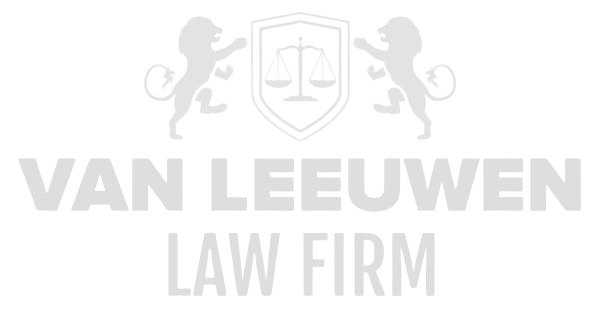The ePrivacy Directive supplements the General Data Protection Regulation (GDPR) by specifically protecting the confidentiality of electronic communications and regulating the use of cookies and similar tracking technologies. This directive requires all online services—from e-commerce platforms to mobile apps—to inform users in advance and unambiguously about which cookies are being placed, what purposes they serve, and which categories of personal data they collect. Consent for non-essential cookies must be explicit, informed, and freely given, with an opt-in mechanism necessary to eliminate any doubts. This presents organizations with the challenge of implementing complex consent mechanisms that seamlessly integrate with existing privacy policies while complying with ePrivacy requirements.
Within the ePrivacy framework, national regulators in EU member states are responsible for enforcing the directive, which can lead to varying interpretations and enforcement practices. Large multinationals, their management teams, and regulators face the risk of high fines and reputational damage in case of non-compliance, especially when research reports or public disclosures of violations attract media attention. In an era where online services are indispensable, a thorough ePrivacy strategy is required that not only ensures legal compliance but also integrates technical and organizational processes to avoid disrupting service continuity.
(a) Regulatory Challenges
The ePrivacy Directive aims for uniformity within the EU but allows room for national implementations, which results in variations in enforcement standards. The interpretation of terms such as “similar technologies” may differ by member state, requiring organizations to carry out in-depth legal due diligence for each market they operate in. Compliance necessitates detailed analyses of national legislation, advice from local privacy lawyers, and continuous monitoring of policy updates from regulators.
The connection to the GDPR means that cookie consent must not only comply with ePrivacy but also be recorded and demonstrable according to GDPR guidelines. This requires double compliance checks: on the one hand, the opt-in process, and on the other, the storage of consent records in a processing register. Legal departments are tasked with seamlessly integrating both regulations and clearly documenting them in privacy policies.
There are also specific sectoral exceptions, such as tracking in telecommunications networks or electronic direct marketing by telecom providers. Implementing such exceptions requires industry organizations and regulators to jointly establish guidelines that clarify when and how exceptions may be applied, resulting in complex organizational and legal coordination processes.
The upcoming ePrivacy regulation, intended to replace the directive, introduces stricter requirements regarding metadata processing and interface privacy. This calls for proactive preparations: organizations need to conduct impact analyses, review draft legislation, and consider participating in consultation rounds to help shape future compliance frameworks.
Finally, contractual agreements with third-party service providers—such as advertising networks and analytics platforms—must be reviewed for ePrivacy clauses. Third parties placing cookies must be subject to binding agreements that enforce the same information and consent requirements. Legal teams must continuously screen and update these contracts based on enforcement guidelines.
(b) Operational Challenges
The technical implementation of cookie consent banners requires integration with all web or app components that load tracking technologies, including third-party scripts, payment modules, and customer analytics. This means development teams must apply rigorous scanning and synchronization workflows to ensure no source is missed, and that script bundling is done in such a way that consent automatically determines which scripts can be loaded.
Part of the process involves setting up detailed cookie categories (functional, analytical, marketing) in which a specific level of consent can be granted or withdrawn for each category. Consent management platforms must link to tag management systems so that whenever consent changes, all associated tags are enabled or disabled in real-time without interrupting the user experience.
Logging of consents and refusals must be done in a tamper-proof manner, so that during inspections by regulators or in the event of disputes, it can be accurately demonstrated which choices a user made at what time. This requires the use of secure database tables and audit-trail mechanisms, combined with access controls for employees retrieving reports.
Operational SLAs for marketing and advertising teams must allow for consent-gathering procedures. For example, email campaigns or personalized offers can only be triggered after full opt-in. Marketing automation flows must include real-time checks on consent status, otherwise unauthorized communication attempts should immediately be routed back to the operational compliance function for corrective action.
Incident response processes for accidentally placing non-essential cookies should include playbooks that incorporate corrective scripts, revalidation of user settings, and restarting browser sessions. Operational monitoring should ensure that such incidents are resolved within predefined response times and reported to internal governance committees.
(c) Analytical Challenges
Measuring consent rates across channels requires advanced data pipelines that aggregate consent data from different front-ends (web, mobile, IoT). Data analysts need to set up ETL processes that link consent status to user journeys and campaign results, without infringing on privacy by recording too much detail.
Analyzing the impact of opt-in rates on conversion funnels requires A/B testing with limited data sets, comparing consent variants against each other. Data teams should define and mask the minimum dataset structure in advance to comply with the minimization principle of the GDPR.
Advanced analytics can reveal patterns in consent—such as which page elements lead to lower opt-in rates—but must operate without automatic reactivation scripts. This means that analytical models must be decoupled from real-time tag management and only provide insights without directly making changes.
Reports to DPA’s (Data Protection Authorities) regarding cookie compliance require statistical support for supply rates and correction mechanisms. Analytical dashboards combine consent data with security and privacy incidents so that governance committees can quickly recognize trends and prioritize improvement actions.
Validating analytical tools is essential: consent logs and associated analyses must be manually checked for accuracy through random sampling to ensure both the accuracy and completeness of reports during audits.
(d) Strategic Challenges
Strategic planning for ePrivacy compliance requires that cookie policies not only be seen as a legal hurdle but as part of a customer trust strategy. By transparently communicating tracking practices in marketing campaigns, brand loyalty can be strengthened, and long-term conversion may increase.
Investments in advanced consent management platforms must be justified through business cases that quantify the increase in opt-in rates and the reduction of penalty risks. Strategic roadmaps must include phased updates to policy, tooling, and training, aligned with product launches and market expansions.
Partnerships with regtech vendors can be established to quickly integrate new features that address upcoming ePrivacy regulation requirements, such as automatic detection of fingerprinting techniques or injection of consent notices into embedded content. This creates a competitive advantage for organizations that proactively automate compliance.
Culture-building around privacy requires leadership to designate privacy ambassadors within business units. These ambassadors are responsible for local compliance challenges and act as a liaison between central privacy teams and operational departments, ensuring strategic alignment and adaptability.
Continuity planning around technology and legislative changes must be part of strategic governance. By combining regular maturity assessments with horizon scanning on the ePrivacy front, organizations can maintain agility in a continuously evolving European regulatory landscape.









